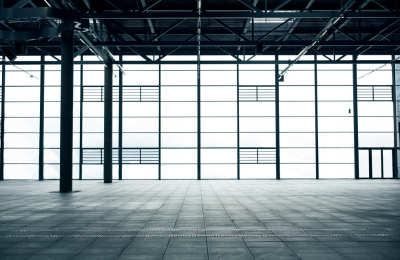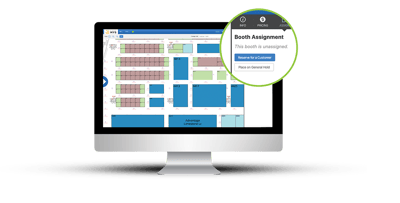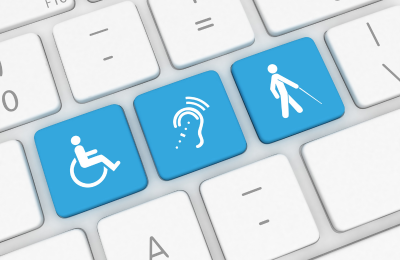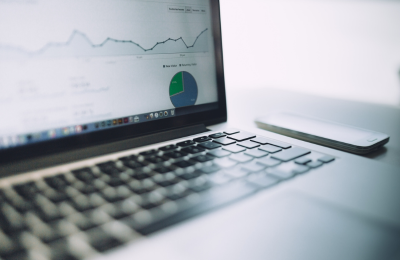Share this
Trade Show Planning: Build a Trade Show Floor Plan
by Joanna Harvey on March 7, 2024
Creating the perfect trade show floor plan is a creative process that requires both strategic planning and the latest technology. At Map Your Show, we understand that the floor plan is the foundation of any successful trade show, as it shapes the experience for exhibitors and attendees. As the leader in trade show floor plan technology, we have created this guide to take you through the steps to create an expo and trade show floor plan that meets the logistical needs of your event while creating a high-impact experience for your exhibitors and attendees.
Article written by Joanna Harvey, Marketing Director at Map Your Show.
Table of Contents:
- Starting with the Basics: Understanding Your Expo Space
- Know Your Venue Inside and Out
- Learn from the Past
- Setting Goals and Objectives
- Clarify Your Event's Mission
- Balance Needs and Desires
- Designing the Trade Show Floor Plan
- Embrace Cutting-Edge Technology
- Guide the Organic Flow
- Flexible Design for Dynamic Events
- Enhancing the Experience
- Bring Your Event Floor Plan to Life
- Floor Plan Designs with Purpose
- Ensure Everyone Feels Welcome
- Utilizing Data for Improvement
- The Power of Event Analytics
- A Cycle of Feedback
- Conclusion: Building an Exceptional Floor Plan
Starting with the Basics: Understanding Your Expo Space
Know Your Venue Inside and Out:
With trade show planning, having a clear understanding of the venue is crucial to ensure that everything runs smoothly. One key aspect of event planning is creating a flawless floor plan, which requires a deep understanding of the space you'll be working in.
Start by requesting your decorator to create a CAD file of your floor plan. This file will be the detailed blueprints or digital layouts of the venue. This file will also take note of important details such as dimensions, immovable structures, doors, furniture, power sources, and accessibility points. This information will help determine how your Exhibit Operations Lead will best set up your trade show, utilize the event space, and ensure that your entire audience can safely and easily access the areas they need to.
 Show management teams often visit the event venue before the event. Depending on the size of your trade show, this can happen up to one year in advance. Special considerations may need to be made if your trade show features heavy equipment. You will need wide aisles and egress for freight to be delivered to booths across the show. Having a comprehensive understanding of your venue will allow you to make the most of the available space while also ensuring that everyone attending the event can navigate the space comfortably.
Show management teams often visit the event venue before the event. Depending on the size of your trade show, this can happen up to one year in advance. Special considerations may need to be made if your trade show features heavy equipment. You will need wide aisles and egress for freight to be delivered to booths across the show. Having a comprehensive understanding of your venue will allow you to make the most of the available space while also ensuring that everyone attending the event can navigate the space comfortably.
Once the preliminary floor plan is created, you will need to submit it to the Fire Marshal for feedback. This can easily be exported through event management software as a DXF or DWG file. With this knowledge, you'll be well-equipped to create a floor plan that meets all your needs and ensures a successful event.
Learn from the Past:
Another key factor in trade show planning is learning from the past and identifying areas that need improvement. By reviewing the layouts and feedback from previous events, you can gain valuable insights into which areas were too crowded and which were underutilized. You can also consider different pricing for higher traffic levels, or “Prime Pricing”.
Understanding successes and challenges throughout your event history helps you refine your approach, ensuring a better experience for attendees and exhibitors at your next event. So, it's always a good idea to take a closer look at feedback and analytics from past events and use that information in your planning for future events. You can also take a moment to ask attendees about their experience with a recent floor plan through a post-event survey.
Setting Goals and Objectives
Clarify Your Event's Mission:
Defining the objectives of your event is critical to creating a successful trade show floor plan. It is essential to understand the purpose of your event and design the floor plan accordingly. The objectives may vary from event to event, such as continued education, enhancing networking opportunities, or showcasing new products. By identifying your goals, you can create a space that supports them and ensures that every decision you make about your floor plan is aligned with your objectives.
For instance, if your primary objective is to increase exhibitor visibility, you may want to consider using pavilions to attract more visitors to these booths. A pavilion is a group of exhibitors in vertical markets, making them easier to find and the overall show easier to navigate for attendees.
 If you aim to enhance networking opportunities, you may want to create designated areas for attendees to meet, engage, and interact with each other. Alternatively, if your goal is to showcase new products, you may want to allow for more space for product demonstrations and displays.
If you aim to enhance networking opportunities, you may want to create designated areas for attendees to meet, engage, and interact with each other. Alternatively, if your goal is to showcase new products, you may want to allow for more space for product demonstrations and displays.
Balance Needs and Desires:
Achieving a balance between exhibitor and attendee needs is vital. Exhibitors want prime locations to maximize leads and visibility, while attendees want to easily find and access the areas that interest them most. As the event organizer, you will need to create a design that accommodates both, emphasizing overall interaction with exhibitors and accessibility for attendees.
Designing the Trade Show Floor Plan
Embrace Cutting-Edge Technology:
When it comes to organizing exhibitions or trade shows, designing a floor plan that makes the most of the available space can be a daunting task. However, with the help of event technology tools like Map Your Show's Floor Builder, this task can be transformed into a project that maximizes the use of space for both exhibitors and attendees. This platform provides an intuitive interface that makes it easy to arrange booth spaces and include interactive elements, such as product displays, demonstrations, and presentations. Additionally, our software offers the flexibility to make changes to the floor plan based on the evolving needs of the show, such as expanding or contracting the floor, ensuring that the event runs smoothly and effectively.
This platform provides an intuitive interface that makes it easy to arrange booth spaces and include interactive elements, such as product displays, demonstrations, and presentations. Additionally, our software offers the flexibility to make changes to the floor plan based on the evolving needs of the show, such as expanding or contracting the floor, ensuring that the event runs smoothly and effectively.
Guide the Organic Flow:
When organizing a large event, such as a trade show or exposition, it's important to make sure that attendees can navigate the space without feeling overwhelmed. One effective way to do this is by thoughtfully designing the layout of the event. By strategically placing popular exhibitors, interactive displays, and amenities like seating areas and food and beverage stations, you can create a natural flow that leads attendees through the space and ensures they encounter all of the key features of the event. This can help to reduce congestion and make sure that everyone has a positive experience. Ultimately, a well-planned layout can make a big difference in how successful and enjoyable an event is for attendees.
Flexible Design for Dynamic Events:
In the world of events, flexibility is an extremely important factor to consider. With everything constantly changing, it's essential that your floor plan can accommodate those last-minute adjustments and scalability. ![]()
 This is where Map Your Show's software comes in, which supports real-time changes and can adjust booth layouts and numbering to ensure that your layout always adapts to the changing needs of exhibitors and the show. This software is a great tool to have at your disposal, as it can help make the planning and execution of your event seamless and stress-free.
This is where Map Your Show's software comes in, which supports real-time changes and can adjust booth layouts and numbering to ensure that your layout always adapts to the changing needs of exhibitors and the show. This software is a great tool to have at your disposal, as it can help make the planning and execution of your event seamless and stress-free.
Enhancing the Experience
Bring Your Event Floor Plan to Life:
An interactive floor plan is an excellent way to provide attendees with an immersive experience beyond event logistics. With interactive elements, the floor plan can become a tool for engagement and exploration. For instance, attendees can preview booth locations and dive into exhibitor profiles to gain a better understanding of what each exhibitor has to offer. This feature can help attendees plan their visit efficiently and make the most of their time at the expo. Moreover, connecting the Attendee Planner to the floor plan can enable attendees to schedule exhibitor meetings and sessions easily. This way, attendees can plan their visit in advance of the show and maximize their time at the event. Overall, an interactive floor plan is a valuable tool that can enhance the overall attendee experience and help them achieve their objectives at the event.
Floor Plan Designs with Purpose:
To make your event more memorable and enjoyable, integrate design elements that encourage interaction and engagement. Networking zones, relaxation areas, and entertainment spots can transform your event space into a vibrant hub of activity. This can help attendees meet new people, recharge, and have fun.
Ensure Everyone Feels Welcome:
Accessibility and inclusivity should be at the forefront of your floor plan design.  A few key elements to consider when designing your floor plan include wide aisles to accommodate wheelchairs and other mobility aids, clear signage to help attendees navigate the space, and designated rest areas where people can take a break and recharge. By taking these steps, you can ensure that all attendees have a positive experience and feel welcome at your event.
A few key elements to consider when designing your floor plan include wide aisles to accommodate wheelchairs and other mobility aids, clear signage to help attendees navigate the space, and designated rest areas where people can take a break and recharge. By taking these steps, you can ensure that all attendees have a positive experience and feel welcome at your event.
Utilizing Data for Improvement
The Power of Event Analytics:
Gaining accurate show data isn’t easy and it's important to have access to the right analytics tools to track exhibitor and attendee behavior. T his is where Map Your Show comes in handy. By using the analytics tools provided by Map Your Show, you can gain insights into exhibitor and attendee show behavior, which can be invaluable for refining your floor plan and improving future events. With this, you can identify patterns in exhibitor and attendee behavior, and use this information to optimize your floor plan, improve the attendee experience, and attract more exhibitors in the future.
his is where Map Your Show comes in handy. By using the analytics tools provided by Map Your Show, you can gain insights into exhibitor and attendee show behavior, which can be invaluable for refining your floor plan and improving future events. With this, you can identify patterns in exhibitor and attendee behavior, and use this information to optimize your floor plan, improve the attendee experience, and attract more exhibitors in the future.
A Cycle of Feedback:
Implement a post-show survey mechanism to ensure that everyone involved, including exhibitors and attendees, has a good experience. Their insights on the floor plan's effectiveness and areas for improvement are crucial for enhancing future event experiences. By listening to the suggestions and concerns of exhibitors and attendees, event organizers can continue to make ongoing improvements to increase the overall event quality and ROI for all.
Conclusion: Building an Exceptional Floor Plan
A thoughtfully designed trade show floor plan is more than a map; it's the foundation of an unforgettable event experience. By prioritizing goals, embracing technology, and focusing on the needs of all exhibitors and attendees, you can create a trade show environment that fosters connections, showcases innovation, and supports the growth of your show for years to come.
Map Your Show is your trade show technology partner with the solutions you need to power your event: building an expo floor plan, helping exhibitors stay on top of their deadlines, navigating attendees through the event with a mobile app, and selling booths and advertising. Our technology powers trade shows, conferences, and events so that you can focus on what matters most: delivering a successful event.
Want to learn more about Map Your Show’s solutions? Schedule a free demo with our sales team or contact us below.
Contact Us
Share this
- Best Practices (35)
- News (33)
- Insider (27)
- Trade Show Managers (27)
- Newsletter (20)
- exhibitors (14)
- Event Mobile App (7)
- Guide (7)
- Interview (7)
- Case Study (6)
- Conference Management (5)
- Event Recap (5)
- AI (3)
- Booth Sales (3)
- Customers (3)
- MYS Team (2)
- Sales Accelerator (1)
- Trade Show Sponsorship (1)
- December 2025 (4)
- November 2025 (2)
- October 2025 (3)
- September 2025 (2)
- August 2025 (2)
- July 2025 (3)
- June 2025 (2)
- May 2025 (2)
- April 2025 (2)
- March 2025 (3)
- February 2025 (2)
- January 2025 (3)
- December 2024 (2)
- November 2024 (1)
- October 2024 (3)
- September 2024 (4)
- August 2024 (3)
- July 2024 (8)
- June 2024 (4)
- May 2024 (6)
- March 2024 (7)
- February 2024 (2)
- January 2024 (4)
- December 2023 (1)
- November 2023 (3)
- October 2023 (3)
- September 2023 (3)
- August 2023 (1)
- July 2023 (3)
- June 2023 (2)
- May 2023 (3)
- February 2023 (1)
- January 2023 (1)
- August 2022 (1)
- March 2022 (1)
- January 2022 (1)
- October 2021 (1)
- September 2021 (1)